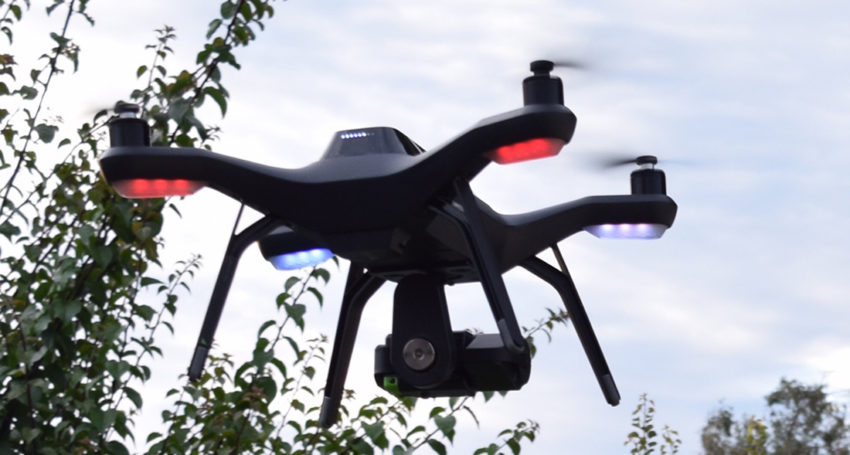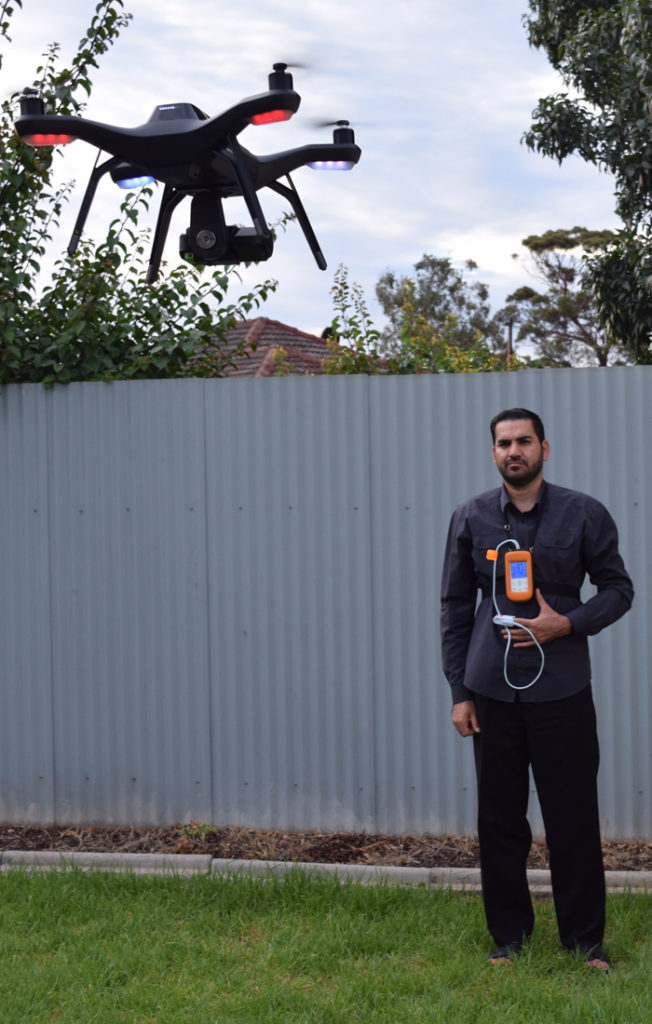Drones detect human vital signs from afar
Technology
Drone technology is being developed to detect vital signs of life in humans stranded in war zones or isolated and injured by natural disasters.

Sign up to receive notifications about new stories in this category.
Thank you for subscribing to story notifications.

Drone technology is being developed to detect vital signs of life in humans stranded in war zones or isolated and injured by natural disasters.
Researchers from the University of South Australia have successfully trialled the use of drones to remotely measure heart and breathing rates using advanced image-processing systems.
The algorithm created by UniSA PhD students, Ali Al-Naji, pictured below, and Asanka Perera, enables the drones to detect vital signs in several people at once, even while they are moving.
Other possible applications include monitoring the vital signs of residents in nursing homes or in areas prone to human infection such as neonatal wards.

University of South Australia PhD student Ali Al-Naji with his drone technology.
Project supervisor Sensory Systems Professor Javaan Chahl said the breakthrough drone system detected movements in human faces and necks in order to accurately source heart and breathing rates.
He said while the drones took measurements from a distance of three metres in recent trials, the technology could be advanced to take the readings from much further away.
“The drone actually has a stabilised commercial go-pro attached to it. Using image processing on the video footage, Ali [the PhD student researcher] was able to extract the heart rate and breathing rate of the person without any difficulty,” he said.
“The drone will single each person out automatically and provide a trace for each individual as to where their heart rate and breathing rate is.
“We’ve also used telephoto optics to look out over 50 metres and we will expand this to 500 metres in the near future using a telescope.”
Professor Chahl said using drones was necessary in environments that were unsafe or inaccessible to humans such as war zones and areas devastated by natural disaster.
“There are scenarios when maybe a drone is the only thing that can get there,” he said.
“A lot of environments are hostile so a drone is the safest option – places like the ocean require drones in order to gain access to people in trouble quickly and safely.
“There’s also situations in clinical settings where you wouldn’t really think it’s worth having electrodes and instruments to monitor patients, but if you can just have a camera do it, you may be able to put instrumentation where you wouldn’t normally put it.”
Professor Chahl said the research began as a response to increased infection rates in countries where electrodes were being used to detect vital signs in neonatal babies.
The research, published in the latest issue of Biomedical Engineering Online, was been conducted over three years using 15 healthy humans aged between two and 40.
The technology is yet to be exposed to possible investors, but peripheral conversations with interested parties have shown immense potential.
“Digital technology like this – one good conversation with an industry partner who has an idea and we could be seeing this come to life in months. The barriers are very low,” Professor Chahl said.
Jump to next article



